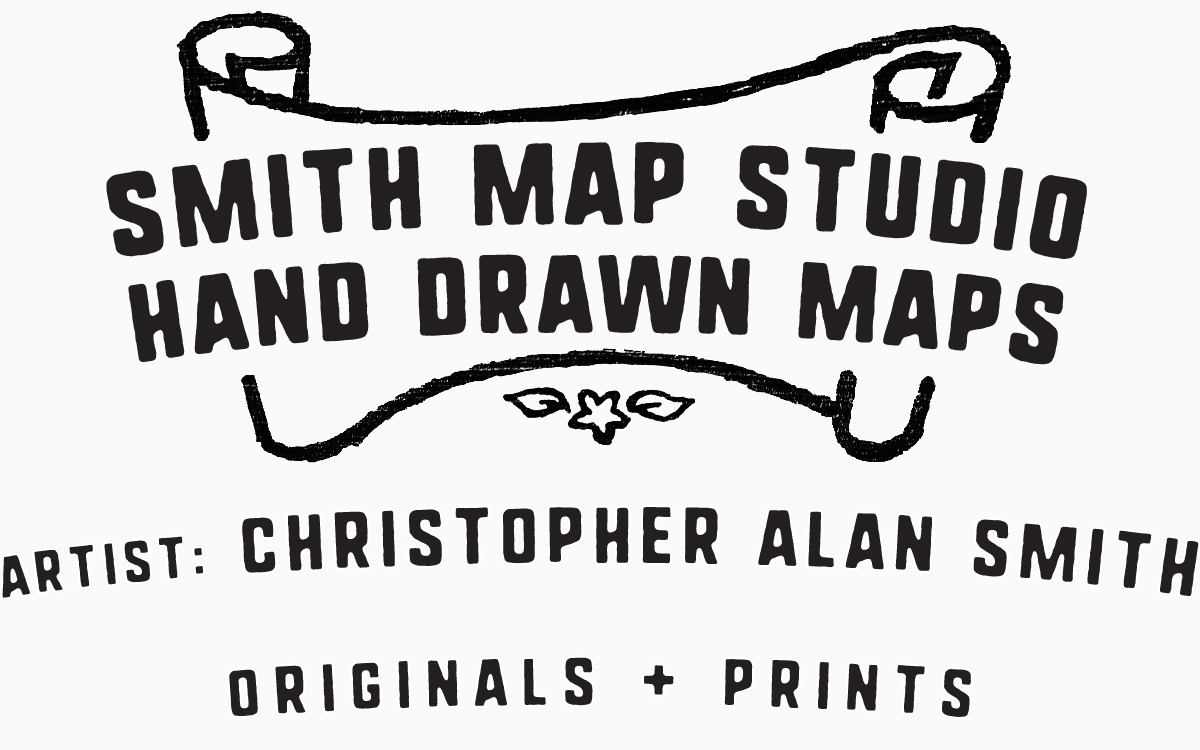Go west—and east and north and south—young man.
Article featured in Texas Monthly: October 2016
Article featured in Texas Monthly: October 2016
In the early eighties, Christopher Alan Smith and his family would pile into their Chevy Caprice and set out from their home in what was once rural northwest Austin on road trips across Texas. Along the way, Smith usually had his head buried in a map. “Way before GPS, I would want to follow our route while Dad was driving,” he remembers. “I would see on a sign that a town was only so many miles away, and I’d look on my folded paper map to guess where we were. I was always a total map geek.” Smith’s childhood passion would eventually become his career. In 2006, while working as a graphic designer for an Austin-based book publisher, he began creating a Republic of Texas–themed board game in his spare time. When packaging and marketing challenges stalled the project, Smith switched gears and began to sketch out a mixed-media map instead, using pen and ink and acrylic paints to illustrate interesting historic facts and sites. When he exhibited his maps at his first juried art show, Houston’s Bayou City Art Festival, in 2008, he sold more than $5,500 worth. He started to realize that making maps could be his full-time gig, which is exactly what it became after he was laid off from his job later that year.
Since then, Smith, who is 45, has sold thousands of his Texas-themed maps, with titles ranging from Cattle Trails and Cowtowns to Texas Oil and Gas. Several of his originals, which can cost upward of $800, now hang in the offices of state legislators and in the homes of famous musicians (both Charlie Sexton and ZZ Top’s Dusty Hill are fans). When he’s not traveling to shows, Smith can usually be found in his home studio on a tree-filled acre in Liberty Hill, where he sketches each map on the drafting table he’s had since high school. Fully half of his time is spent on historical research—studying old maps and looking up images of the figures, landmarks, weaponry, and flags he’ll be drawing. “Maps will always have a magic for me about all the possibilities of where I can go and where those before me have gone.”
Q&A With Christopher Alan Smith
What’s a mapmaker’s typical day like?
It’s usually a mix of illustrating, doing some woodworking to make my own frames, making [giclee] prints, getting orders shipped out, and looking online for inspiration. And I listen to music while doing most everything, anything from Frank Black to the Beatles.
What techniques do you use?
I tend to follow the style of postage stamps and currency. I use a pen-and-ink stipple technique, which is a series of dots that create the illusion of halftones. Cross-hatching is another method, using lines instead of dots. I’ve also started using engraved wood to give the maps a layered, 3-D look. For example, on my Thirteen Colonies map, I illustrated the coastline on two layers of hardboard.
You do a lot of historical research. What are some of the most surprising things you’ve learned about Texas history?
While working on the Republic of Texas map, I learned about many obscure battle sites and skirmishes, like the Battle of Bexar, which happened in December 1835, just a few months before the Alamo. It was a tough fight between the Mexicans and the Texas Revolutionary Army. It ended with house-to-house combat in San Antonio and with the famous Ben Milam getting shot in the head and killed.
Which map has been the most challenging to make?
The Republic of Texas map. It depicts 87 battle sites and 47 frontier forts, and the original is about forty by sixty inches. It took me almost two years to complete, because I was still working full-time and my son and daughter were just babies.
If you could have dinner with a group of Texas historical figures, whom would it include and why?
I’d invite [John Salmon] “Rip” Ford, a doctor who became a Texas Ranger and a Confederate colonel, because he fought in just about every Texas battle after the Texas Revolution; Stephen F. Austin, not only because he’s the Father of Texas but because we could talk about cartography and the years he spent traveling and gathering information for the map of Texas that he sent off to publisher Henry S. Tanner, in Philadelphia, in 1829; and Juan Seguín, because he was a fascinating character who fought for both the Mexicans and the Texian Army.

